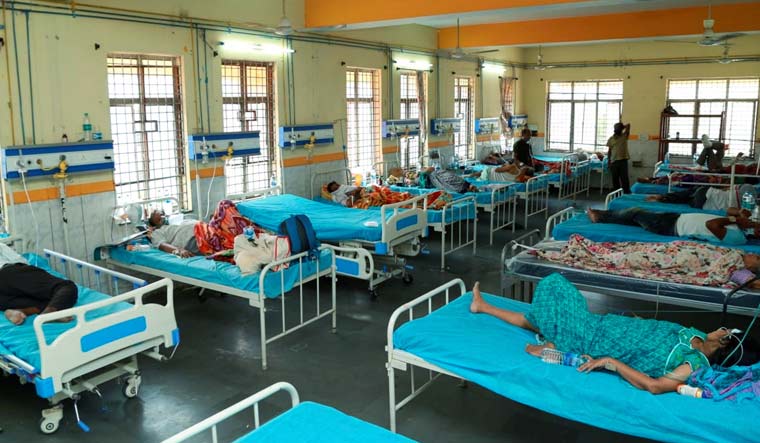The second wave of COVID-19 has hit India harder. This time around, resistance to antiviral medication has become a big cause for worry, say experts.
Although the number of patients who improve is still good, four-five per cent of patients are resistant to usual antiviral medication and generally succumb, says Dr. Pramod V. Satya, consultant – Internal Medicine, Vikram Hospital Bengaluru. “Compared to the first wave, the response to oral antiviral drugs like doxycycline and favipravir are very poor and hence there is an increase in hospitalisation for IV(intravenous) medication due to which the demand for both wards and ICU beds is increasing. This In fact is causing the mortality rate to be much higher as compared to the first wave,’’ says Satya.
The immune trigger in the second wave is slightly different from the first wave, he says. “In the second wave in contrast to first wave the infectivity and the virulence is much higher and hence the disease spreads much faster,’’ he explains.
Bengaluru Urban has currently 3,01,712 active cases. The district reported 20,870 positive cases on Monday taking the total tally to 8,40,274. As many as 132 deaths were also recorded on the day.
Vikram Hospital has a higher number of patients aged between 20-50 in their critical care units during the second wave. “In younger people with stronger immunity, the mortality is higher in second wave when compared to the first wave. So in these sub group of young people, the disease spreads very fast and by fourth or fifth day, we see significant lung damage on the CT scan. Such people respond very poorly to all kind of antivirals and immune modulators and frequently succumb. Also, these patients spend a longer time in the ICU or ventilators which is responsible for acute shortage of ICU beds,’’ adds Satya.
The current wave is more worrying than the first, says Dr Gauri Agarwal, gynaecologist and fertility specialist at Seeds of innocence in New Delhi. “We are seeing a lot more children too in this wave,’’ she says.
During the first wave, the age-group of children and infants were relatively spared, or if affected, were mostly asymptomatic and/or had milder symptoms.'' While on the contrary, during the second wave this time, children and infants are now presenting to the hospitals with MIS-C (Multisystem Inflammatory Syndrome in Children), a condition in which various body parts become inflamed, including the vital organs heart, lungs, kidneys, brain, eyes, or the gastrointestinal organs. They clinically present as fever, abdominal pain, vomiting diarrhoea, neck pain, rash and red eyes,'' says Dr Monalisa Sahu, Consultant Infectious Diseases, Yashoda Hospitals, Hyderabad.
India has seen a huge surge in infectious in both the pregnant and non-pregnant population during the second wave. ‘’Unlike the first wave, where we didn’t notice an increased severity of the infection in pregnant women if they didn’t have co morbidities, we have noticed an increase in pregnancy complications in this wave like high blood pressures, growth restriction in the baby, preterm deliveries, increase in the ICU admissions in the mother and the baby and a higher incidence of maternal deaths, says Dr Geeth Monnappa, consultant obstetrician and gynaecologist, Fortis La Femme, Richmond Road, Bengaluru.



